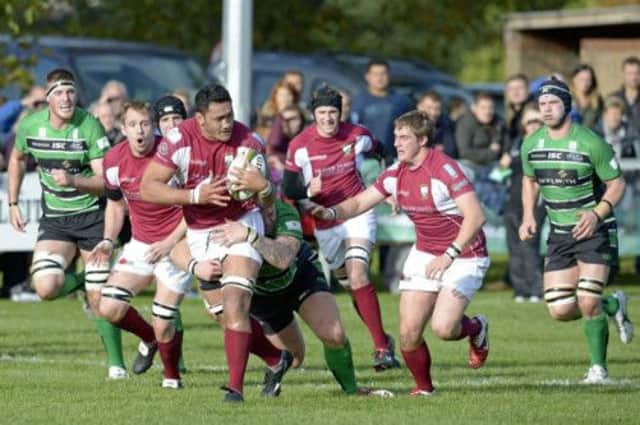Iain Morrison: Super idea that is long overdue


Having been left to doze in splendid isolation by a succession of Murrayfield princes, on Wednesday evening they were roused from their slumbers by Mark Dodson’s puckered lips. Lucky them. When the Scottish Rugby Union announced a commitment to build the game from the base up rather than from the observation deck down it felt long overdue, but welcome all the same.
The headline-grabbing fact in the SRU’s report last week was an eight-team “Scottish Super League” to replace the ten-club Premiership and already you are wishing that someone had come up with a better name. The comparisons with another “Super Rugby” league are unlikely to be flattering.
Advertisement
Hide AdAdvertisement
Hide AdThe new league is due in season 2015/16. It will boast eight teams, a new play-off system for the top four and semi-professional status, although that can mean just about anything. Using one definition, the RBS Premiership is already semi-professional since some players at some clubs undoubtedly get paid. Whether the majority of clubs will ever attract the sponsorship and crowds to sustain even modest payment for the majority of their players is a moot point.
The changes are aimed at: “Restoring the competitiveness of Scottish clubs with those English, Welsh and Irish clubs which play at a level just below full-time, professional rugby.” Actually Scottish clubs may already be there. Sure, our Premiership sides get tonked by bruisers from England’s Championship but almost all of their players are full-time professionals. The semi-professional league below that is England’s National One and you fancy Ayr, Heriot’s, Gala and Melrose would be pretty competitive against the likes of Esher, Tynedale, Hull and Henley.
Elsewhere, the SRU prospectus puts a big emphasis on women’s rugby, which has been the poor relation of the Scottish game for too long, although its Mafiosa-style threat regarding the dire consequences for “those unwilling or unable to achieve what is needed for international play” is not helpful. If there was anyone better waiting in the wings to replace the sorry underachiever, she would have been shown the door long ago.
The problem in the men’s game, a chronic shortage of numbers, is compounded in women’s rugby because they don’t get the same influx of foreign professionals who either qualify for Scotland through a “Gretna granny” or hope to do so after three years’ residency.
Schools rugby also comes in for plenty of attention because the age-grade game around the globe is better than ours and Scott Johnson, the SRU’s director of rugby, admitted only recently that increased competition at youth level was the key to improving the standard of players picked up by the two professional teams. Private schools have invested a heap of money, time and resources into rugby in recent years and, if you listen to Ally Donaldson, director of rugby at George Watson’s, the game in the private sector is pretty healthy.
“I think the standard of [private] schools rugby is not too bad and, with a little tinkering, it could become better,” says the man who saw his school do the double last month by winning both the under-16 and under-18 Brewin Dolphin Schools Cups. “Essentially we need the best playing the best more often and in the best weather. I’d like to start the fixture list with a clean slate to ensure that we get more competitive matches.”
Intensity is the key because too many schools play too many mismatches and not enough competitive fixtures. The SRU can’t strongarm the private schools into re-arranging their fixture list or make them play club under-18 teams. Instead, Murrayfield knows that it has to utilise the state sector much better than at present. So it has proposed four regional academies (to be based in Edinburgh, Glasgow, Borders, and Caledonia). State schools can’t hope to compete with the resources thrown at rugby by the best of the private sector.
Up until now we have had increasing numbers participating in the Brewin Dolphin Cups cited as evidence of the success of the SRU’s schools policy. Now at least we have some honesty. The document concedes that just 57 of the country’s 340 state secondary schools are able to field four or more age-grade teams. (There are 25 private schools going about their business).
Advertisement
Hide AdAdvertisement
Hide AdYou have to applaud the SRU for grasping the nettle but you can’t help wondering just how much difference these proposals will make. The biggest problem holding back Scottish rugby is a player pool shallower than a Texas beauty queen and the single biggest reason for that is the appalling weather and a lack of modern (ie indoor) facilities.
The union should champion summer rugby for the age grade ranks or, failing that, throw some more coals on the fire and hope that all the dire warnings of global warming are for real.